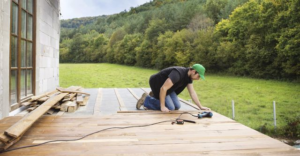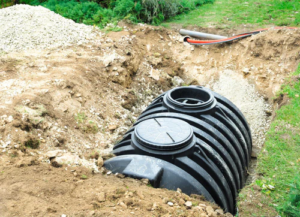Mold can ruin your walls, cause health problems and spread quickly. If you spot any signs of mold on your property’s walls, it’s essential to act immediately.
Mold remediation involves cleaning and disinfecting non-porous surfaces, disposing of porous materials, and applying a biocide to the affected area. These tips can help you deal with the mold before it causes permanent damage. Contact Mold Removal New York for professional help.

1. Detergent and Water
Detergent and water can scrub surface mold spores off non-porous surfaces such as glass, ceramic tile and countertops. This method of cleaning works best for items with light mold growth that is not deeply imbedded. Porous materials such as drywall, carpet and wood furniture can be hard to clean completely. Often, the only way to remove deeply infested porous items is to replace them.
It is important to take proper safety precautions when cleaning mold, as many spores can be dispersed into the air during the removal process. Wear gloves and a mask to prevent direct contact with the mold spores as well as to avoid inhaling them. It is also important to open windows and use a fan for ventilation during the cleaning process.
A cup of vinegar added to a load of laundry can help kill mildew and mold spores on clothes. Vinegar can also be used to clean and disinfect surfaces in the bathroom such as showers, bathtubs and sinks.
Mixing laundry detergent with baking soda can also be an effective fungus cleaner. Add a cup of baking soda to the washing machine with the normal amount of laundry detergent. Run two complete cycles on hot water. Then, if the clothing still smells or looks moldy, wash it again and dry in sunlight or in a dryer with a cup of white vinegar.
Using white vinegar on fabrics can also be used to clean and disinfect items in the home such as shoes, pillows and towels. Mix equal parts of white vinegar and water in a spray bottle and spray the fabric, then let it sit for an hour or so. This can be done on all types of fabrics, including silks and linens.
Ammonia can also be used to kill mold on hard, non-porous surfaces like glass and tiles but it is not as effective on porous materials such as drywall or wood. It is also a harsh chemical that can be toxic to inhale. However, it is an excellent choice for killing mold spores on wallpaper or paint as it can effectively break down the waxy residue that traps spores underneath.
2. Baking Soda
Baking soda is an affordable, natural solution to remove mold and mildew. It is also much safer to work with than chemical cleaners and won’t damage surfaces or materials like wood or plaster. It can be used to clean a variety of surfaces, and it’s safe for kids, pets, and people with allergies. It works great to remove surface stains and deodorizes, but it doesn’t penetrate or kill airborne mold spores or treat the root of the problem.
Mix baking soda with water in a 1:1 ratio to form a paste. This solution can be applied to the infected area and left to sit for a few hours. Then, scrub the area and wipe it clean. Repeat this process if necessary to fully remove the mold. It’s recommended to wear gloves and a mask during this cleaning process.
Another natural option for removing black mold is white vinegar. This mildly acidic product can kill 82 percent of black mould species on porous and non-porous surfaces, and it works well when mixed with baking soda. To use this solution, add a few tablespoons of baking soda to a spray bottle and fill the rest of the way with water. Then, apply the solution to the affected area. It’s recommended to use a scrub brush for this step.
Allow the solution to sit on the affected area for a few hours, then scrub and wipe it clean. This solution should not damage most hard surfaces, but it’s best to test a small spot in an inconspicuous area first. After scrubbing and rinsing, a final spray of white vinegar can help eradicate lingering spores and prevent them from returning.
The best way to keep your home safe and healthy is to regularly wash down and disinfect your surfaces. It’s a good idea to use exhaust fans in kitchens and bathrooms, and open windows to encourage proper ventilation. Regular cleaning and drying of moisture-prone areas will also help to reduce the risk of mold growth. It’s also important to properly store and use cleaning products so that they don’t expire or lose their effectiveness.
3. Hydrogen Peroxide
Hydrogen Peroxide is a common ingredient in household products that can be used for cleaning and disinfecting. It has a wide range of uses and can be purchased at most supermarkets or drugstores. It is a popular choice for mould removal as it doesn’t produce dangerous fumes, is inexpensive and can be diluted with water to create a cleaning solution that is safe to use on both porous and non-porous surfaces.
Hydrogen peroxide works by releasing oxygen on contact with mold and other micro-organisms which oxidizes their surface and breaks down proteins and DNA. It is an effective antiseptic and can kill a variety of microorganisms including viruses, bacteria and mould spores. It also penetrates materials more effectively than bleach and is safe to use on a variety of surfaces including fabric, wood and metal.
While hydrogen peroxide is an effective mold remover it has some limitations. Most importantly, it does not kill mycotoxins. Mycotoxins are the harmful substances produced by some mould species and can cause serious health issues. This means that even if you manage to remove the visible signs of mould, the mycotoxins could still remain, which may pose a serious health risk.
To use hydrogen peroxide to clean and kill mold, first ensure that the area is well-ventilated and you are wearing gloves and a mask. Pour a solution of equal parts water and 3% distilled hydrogen peroxide into a spray bottle and apply liberally to the affected surface. Leave it to sit for 10-15 minutes before scrubbing the surface with a brush or rag and wiping it clean. Repeat as necessary until the surface is free from mold.
Be aware that hydrogen peroxide can react with certain plastics and can lighten fabrics. It can also degrade quickly if it comes into contact with copper or nickel, so always keep a fresh supply of solution on hand. Also, if your surfaces are particularly sensitive to chemicals, you may want to consider hiring a top-rated professional instead. They will be able to identify and treat the source of your problem, not just wipe it away.
4. Tea Tree Oil
A natural alternative to corrosive cleaners, tea tree oil has been shown to be highly effective at killing mold spores. The fungicidal properties of this oil are derived from the extract of the Australian tree Melaleuca Alternifolia. It’s often found in skincare products and sold in many stores as a treatment for a variety of minor health issues. Other essential oils, such as eucalyptus and lavender, may have antifungal properties, but they are not as strong as tea tree oil.
To use tea tree oil for mold removal, dilute it in a ratio of 1 teaspoon of oil per cup of water and pour the solution into a spray bottle. Then, apply it to your affected surfaces and leave it to sit for an hour before wiping it away with a clean cloth. Alternatively, you can spot-treat stubborn mold stains by soaking a toothbrush in the oil and scrubbing the visible residue away.
Vinegar can also be used to kill mold and prevent further growth. Because of its acidity, vinegar can kill a broad range of microorganisms, including mold. It is best to spray the vinegar on your moldy surface until it is saturated. Then, wipe it down and let the area dry completely. Alternatively, you can combine equal parts of vinegar and baking soda in a spray bottle and spray over the affected area. The baking soda will lift the stains while the vinegar will kill any remaining mold spores.
When using any cleaning solution, always test it on an inconspicuous area before applying it to a large surface. Also, wear rubber gloves, goggles, and a mask to protect yourself from breathing in any airborne spores that might be released during the cleanup process. Finally, if the affected area is larger than 10 square feet, it is wise to call in a professional to ensure that all of the mold is removed and the moisture source has been properly addressed.
If you decide to go the chemical route, always be sure that the product is safe for your particular surface and that it will not damage or discolor it. And don’t forget to use duct tape and plastic sheeting to contain the area that is being cleaned, and keep it closed until it is fully dried.








